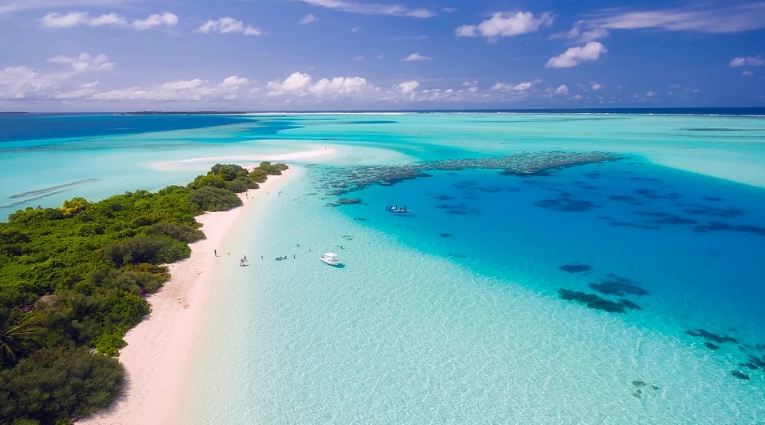How much do you know about the sea, aside from its salty taste and its color appearing blue? When you were a kid, your knowledge and comprehension are limited. But time passes by, the mysteries and questions in the vast universe and the deepest seas are becoming clearer to you. So by now, how much do you know about the seas?
The sea comprises the world’s ocean, or simply it can be called the oceans. It is the interconnecting bodies of saltwater that cover approximately 75% of the surface of the earth. The seas have a total volume of roughly 1,332,000,000 cubic kilometers.
The seas have a significant role in moderating the Earth’s climate and are vital in the water cycle, carbon cycle, and nitrogen cycle. They also are significant sources of food for humans and animals. They are the primary source of fish, shellfish, seaweeds, etc.
The seas serve as a passage for human trade, travel, mineral extraction, power generation, warfare. Some leisure activities in the sea are swimming, sailing, and scuba diving. It was also a significant part of human culture, as evident in many literature pieces, as in Homer’s odyssey. They are also subjects in arts, theatre, and classical music.
The seas have been traveled and explored since ancient times. Still, the scientific study, specifically of the oceanography, started from Captain James Cook’s voyages with his exploration of the Pacific Ocean between 1768 and 1779.
There were assumptions that the sea’s water came from the Earth’s volcanoes about 4 billion years ago. They were released by degassing from molten rock. Meanwhile, much of the research suggests that Earth’s water may come from comets.
One notable characteristic of the sea is its saltiness. The open ocean has about 35 grams (1.2 oz) solids per liter, a salinity of 35 ‰. Salinity is measured in parts per thousand (‰ or per mil).
The Mediterranean Sea has slightly higher salinity at 38 ‰ while the northern Red Sea can reach 41‰. In contrast, some landlocked hypersaline lakes have a much higher salinity, like the Dead Sea has 300 grams (11 oz) dissolved solids per liter (300 ‰).
The word sea also represents smaller, partly landlocked sections of the ocean and certain large, entirely landlocked, saltwater lakes, like the Caspian Sea and the Dead Sea.
In some ancient civilizations, the phrase “seven seas” was used to describe water bodies known at that time. Septem maria or seven seas is the ancient Romans’ name to the lagoons separated from the open sea near Venice.
Meanwhile, most current sources state that the “seven seas” refer to the Indian Ocean, the Black Sea, the Caspian Sea, the Adriatic Sea, Persian Gulf, Mediterranean Sea, and the Red Sea. However, some geographers do not agree on this list of the “seven seas” as its reference will be different based on the part of the world and the period in question.
If to base on the Age of Discovery, some geographers point out that the list should include the Atlantic, Pacific, Arctic, Indian Oceans, the Mediterranean Sea, the Caribbean, and the Gulf of Mexico. On the other hand, other geographers are pushing that the Mediterranean and Red Seas, Indian Ocean, Persian Gulf, China Sea, and the West and East African Seas will be on the list.
Presently, a sea is defined as a division of the ocean, which is enclosed or partially enclosed by land; thus, there are over 50 seas that are recognized worldwide. With the said definition, the Caspian Sea, Dead Sea, and the Aral Sea will not be included as seas but are saltwater lakes as they lack an outlet to the ocean. And with the same definition, the Gulf of Mexico and Hudson Bay are considered seas.
Fast Facts about Seas:
- The Bering Sea is the largest sea that spreads 876,000 sq. miles or 2,270,000 sq. kilometers.
- The Red Sea is the saltiest sea in the world, with 41 parts of salt per 1,000 parts of water. Due to its salinity, it is also the warmest sea in the world, with temperatures ranging from 68 degrees to 87.8 degrees F depending upon which part you measure.
- The Baltic Sea is also considered one of the coldest seas. The seas near the poles are the freezing seas, including the Greenland, Barents, Beaufort, Kara, Laptev, and East Siberian Seas. They are found near the North Pole. The Weddell and Ross Seas were found in the south poles.
Related Links:
https://en.wikipedia.org/wiki/Seven_Seas
https://www.britannica.com/story/just-how-many-oceans-are-there
